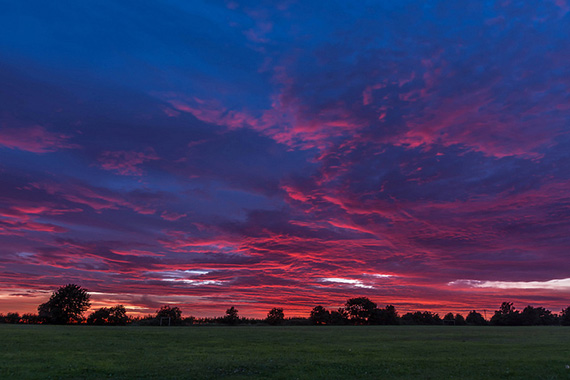In today’s photo tip we’ll move back into landscape photography… How to get better sunset photos!

photo by Rajarshi MITRA
Sooner or later we all give sunset photography a shot. It’s almost a rite of passage! In fact, for a lot of us, seeing stunning sunset photos is what got us interested in photography in the first place.
But, for most of us, our first attempts at sunset photography were dismal, at best. This and the next few articles are going to cover ways to move our sunset photography from the reject stack to the wall.
Our first sunset photography photo tip is concerning exposure.
This photo tip is pretty basic, but we all have to start somewhere. If you haven’t learned how to get the right exposure, then it isn’t basic—it’s a game changer.
For the most part as beginners, when we first start shooting sunset photos, we have our camera set on automatic and trust in the in camera’s meter to get the exposure. When we see the final shot, the sun is there (as expected) but the whole rest of the photo is black. Or at least really dark.
Why?
When we first looked at the scene, the sunset was gorgeous. All the oranges, reds, and yellows reflecting off the clouds are what attracted us. But, in the final version, the clouds were pretty much gone! It just showed a muddy, dark mess.
It’s the meter.
The light meter in your camera is designed for the “average” shot. Not for one that is overly bright or overly dark.
Because the meter is assuming your sunset photo is an average shot, it “reads” the amount of light in the scene and sets the exposure to an average—or to somewhere around the middle of the scale between totally washed out and totally dark.
For most photos we create, there are bright points and dark points, so setting the exposure to an average is acceptable. (Not great, but serviceable.) The light points will show as light, and the dark points will show as dark, while the averages will record properly.

photo by Ben Cremin
But, in a sunset photo, the sun is very bright in comparison to the rest of the scene. Let’s face it, at sunset the ground is starting to get pretty dark. The meter sees all this light from the sun and sets the exposure—not for showing the sun way up on the brightness scale, but lowering the exposure to show the sun’s light in the middle.
This dramatically underexposes the rest of the shot and everything but the sun goes black.
By the way, the middle of the road exposure is called 18 percent gray. It’s the point halfway between blown out and black.
There is a lot of science involved, but simply put, that’s the way your camera’s meter works.
The opposite is true, too! If you metered the darker ground, the sky and sun (after bringing the exposure up to an 18 percent gray average) would be totally over exposed and blown out.
How to fix it?
Since the extremes of light and dark are what’s creating the problem, the “fix” is to take your meter reading from the sky but with the sun out of the frame. The sky—without sun—is pretty close to average (18 percent gray) so the reading will be correct. Or at least as correct as you’re going to get.
The way to do that is take your meter reading from an area of the sky near to the sun, but with the sun out of the frame. Then recompose with the sun where you want it, and shoot.
Now the sky and clouds (which are probably what we were going for in the first place) will record all the colors.

photo by Christopher Michel
Take this landscape photography photo tip and do some experimenting! Try doing some sunset photos by metering with the sun in the frame, then try one by metering from the ground. Finally try metering the sky—with the sun out of the frame. Compare the differences! It’s a good way to get a good understanding of your light meter—how it works and how to work it.
About the Author:
Dan Eitreim writes for OnTargetPhotoTraining.com. He has been a professional photographer in Southern California for over 20 years. His philosophy is that learning photography is easy if you know a few tried and true strategies.
Go to full article: Sunset Photography Tips
What are your thoughts on this article? Join the discussion on Facebook
PictureCorrect subscribers can also learn more today with our #1 bestseller: The Photography Tutorial eBook
The post Sunset Photography Tips appeared first on PictureCorrect.